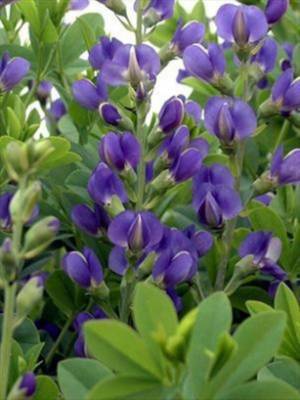Blue Wild-Indigo

Baptisia is a large perennial plant that can reach up to four feet tall and has compound leaves with three leaflets that are deep green to green-gray. The flowers are gorgeous in the spring, with pea-shaped flowers on an upright stalk 1-2 feet tall. The most common bloom color is a deep bluish purple, as seen in the photo, but occasionally, white or yellow flowers can be found. This native is a member of the bean family and is commonly found in prairies, along hillsides, and in open woods. The seed pods of Baptisia are unique as they turn a dark brownish-black after they ripen, and the seeds rattle when shaken or when the wind blows. In the late fall, the plant will turn silvery in color, break off at the base, and tumble through the prairie to shed the seeds in new locations. Historically, this plant was used by Native American tribes and settlers as a blue dye since the sap turns purple or slate-colored when exposed to the air. There are several different cultivars of this native available for sale in the garden industry, including dwarf varieties that are half the size of the true native, some with brown blooms and still others with red and white mixed blooms. This native does not transplant well once it has established as it has an extensive tap root system but can be moved when they are little. Baptisia prefers full sun to partial shade and is supposed to be deer resistant, with relatively few disease or pest issues.

Have questions? Contact our office where our Horticulture Extension Agent will assist you with questions.
Phone: (316) 321-9660
Email: callae@ksu.edu